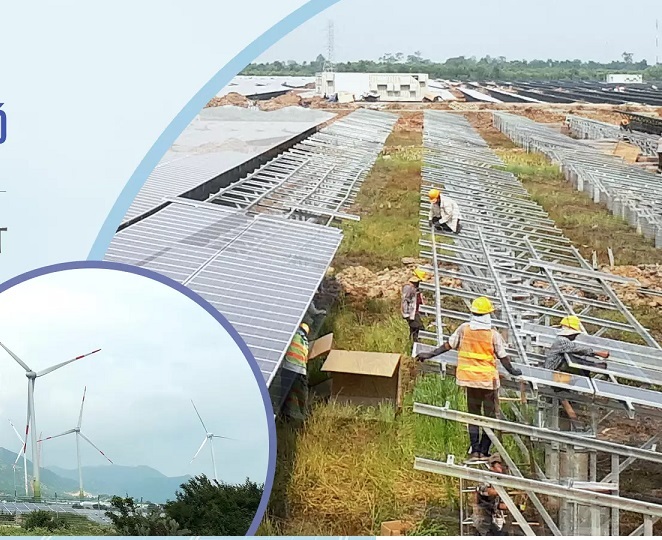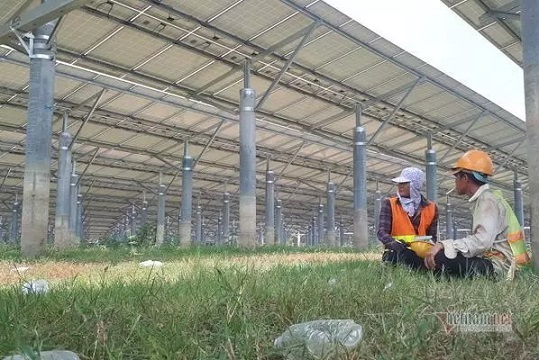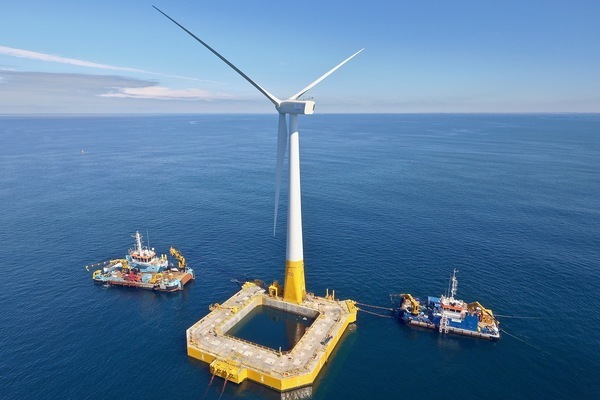At the National Assembly session in November 2020, one of the speeches that stirred the parliament during the Q&A session was the question of deputy Ksor H'Bo Khap to Minister of Industry and Trade Tran Tuan Anh on how unused solar batteries would be dealt with in the future as the development of solar energy in Vietnam is rampant.
 |
|
|
In just a short time, the capacity of wind power and solar power in Vietnam has risen to the top of the world, on par with many developed countries.
Data from the Electricity of Vietnam (EVN) shows that the total capacity of wind power and solar power in Vietnam has reached more than 20,000MW.
According to a World Bank report, Vietnam currently has the highest installed capacity of solar power in Southeast Asia, with 16,500MW by the end of 2020. Statistics of the International Renewable Energy Agency (IRENA) show that, by the end of 2020, Vietnam ranked 8th and entered the top 10 countries with the highest installed solar capacity in the world.
In the government’s draft Power Plan 8, the Ministry of Industry and Trade calculates that by 2030, the total installed capacity of the power source in Vietnam will be 155,722 MW. Notably, coal power will decrease by 6,694 MW; LNG-fueled power will reduce to 18,550 MW while wind power generation will increase, with 17,338MW of onshore wind power and 4,000MW offshore wind power by 2030.
Accordingly, wind and solar power plants will emit huge amounts of waste of up to hundreds of thousands of tons in the next 10 years.
According to Dao Xuan Lai, an expert of the United Nations Development Program (UNDP), the cumulative amount of solar power waste by 2030 will be 11,000 (early loss) to 15,000 tons (recurring loss); 1.5 million (early loss) – 1.7 million tons (permanent loss) by 2045; and 3.1 million (early loss) to 3.5 million tons (regular loss) by 2050.
That is not to mention the accumulated waste from electrical storage that is expected to reach 27.5 million tons by 2030.
The material composition of photovoltaic panel waste consists of glass (69%), ferrous + non-ferrous metals like silver, copper, aluminum, lead and tin (28%), and remaining materials like plastic and silicon (3%).
According to Lai, waste from photovoltaic panels is considered hazardous waste unless components containing hazardous materials are properly removed and disposed of. Toxic substances such as antimony exist in small amounts but can be toxic.
In addition, with solar power, waste from wind turbines is estimated at 3,700 (early loss) - 1,100 tons (recurring loss) by 2030; 169,900 (early loss) – 16,500 tons (regular loss) by 2045; and 346,100 (early loss) - 88,300 tons (regular loss) by 2050. The waste material composition is mainly ferrous metal. Synthetic materials in fiberglass are the most difficult to recycle, requiring specialized handling.
How will Vietnam deal with this huge source of waste?
 |
|
|
According to experts, photovoltaic panels and wind turbines at the end of their life contain valuable materials (glass, steel, aluminum, copper, silica, rare metals, etc.) and recycling can significantly help save resources. Discarded photovoltaic panels are currently considered hazardous waste unless components containing hazardous materials are not properly removed and disposed of.
Wind turbines, due to their large size, require specific provisions for dismantling and site restoration. Components dismantled from wind turbines have established recycling lines and do not require additional delamination techniques
Although Vietnam has clear and specific regulations on solid waste and hazardous waste management, a specific legal basis for the classification of waste from solar and wind power projects is not yet available.
Vietnam can refer to the experience of other countries on renewable energy. For example, Germany's Renewable Energy Law 2017 prohibits landfilling of wind turbines and requires the wind power operator to dismantle the work and remove all sealing soils upon permanent abandonment of the site.
In the UK, most wind power projects ate required to have a "discontinued bond" with the local planning authority at the time of planning agreement to cover the costs of the decommissioning, usually as a condition in the planning step.
Regarding treatment of unused photovoltaic panels, Dr. Vo Viet Cuong from the Faculty of Electrical and Electronics Engineering, University of Technical Education in Ho Chi Minh City, said the world has enough technology to recycle and treat what science has created. The panel supplier must be responsible for collecting and handling the waste; otherwise, it should be fined.
Cuong noted that the Government needs to adopt a policy to encourage investment and mandatory safe recycling of solar photovoltaic panels. The manufacturer must be responsible for the recovery, processing and recycling of photovoltaic panels. The Ministry of Natural Resources and Environment should quickly issue regulations binding the responsibility of manufacturers and distributors to recall or hire a unit to handle expired photovoltaic panels.
In addition, regulations should be enforced to encourage investments in safe photovoltaic panel recycling as this activity can generate money.
Worryingly, according to the UNDP expert, solar and wind power recycling and waste treatment technologies are still in their infancy worldwide.
In addition to limiting landfilling of wind and solar power waste, Dao Xuan Lai said that it is necessary to ensure a harmonized legal framework on waste including cross-border waste transportation; and encourage the development of recycling technologies to recover strategic materials found in wind and solar power plants.
Luong Bang

Where will waste from wind, solar power plants go?
Wind and solar power has been developing at lightening speed in Vietnam recently. Now is the time to think about dealing with the equipment when it’s life cycle ends.